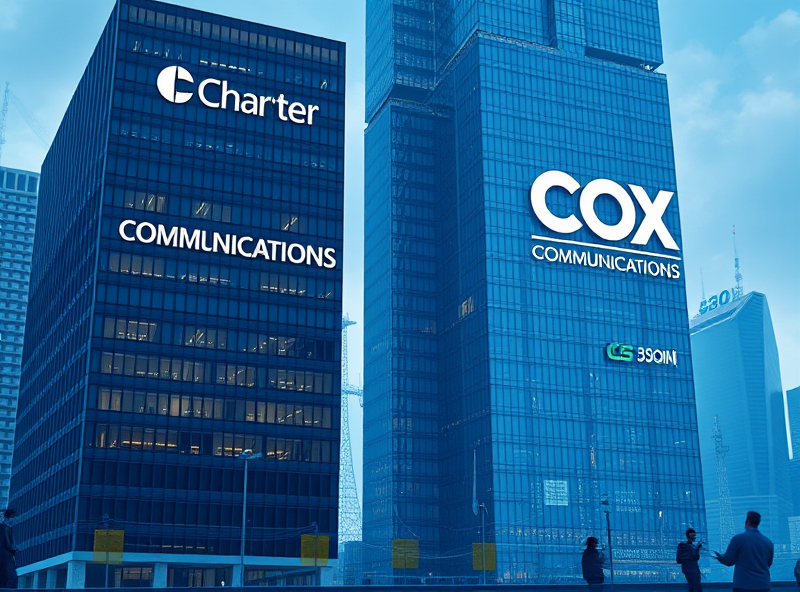
Charter’s Cable Future: Wireless Integration Strategy 2025
Sustaining Legacy: Charter’s Cable Internet Performance Overview

Charter Communications, known for its Spectrum brand, has long been a dominant player in the U.S. broadband market. As the digital landscape evolves rapidly, Charter continues to invest in maintaining and enhancing its cable internet infrastructure to meet growing consumer demands. This commitment to legacy cable technology—while integrating future-ready innovations—offers both stability and performance for millions of households.
One of the key strengths of Charter’s cable internet lies in its use of DOCSIS (Data Over Cable Service Interface Specification) technology. With the rollout of DOCSIS 3.1 and the planned upgrade to DOCSIS 4.0, Charter is ensuring faster speeds, lower latency, and improved network efficiency. These upgrades are essential as households increasingly rely on high-bandwidth applications like 4K streaming, remote work, and online gaming.
In 2023, Charter’s average download speeds reached over 200 Mbps in most serviced areas, with gigabit options available in many urban and suburban regions. The company has also made strides in reducing service interruptions by enhancing its network monitoring systems and deploying AI-based predictive maintenance tools.
Moreover, Charter’s continued investment in hybrid fiber-coaxial (HFC) networks allows it to offer competitive speeds without the immediate need for full fiber-to-the-home (FTTH) infrastructure. This strategy provides a cost-effective and scalable solution for expanding high-speed internet access, especially in underserved areas.
For consumers, this means more reliable connections, fewer buffering issues, and better overall online experiences. Whether you’re a remote worker, a student, or a streaming enthusiast, Charter’s cable internet performance remains a strong and dependable choice.
For a deeper look into broadband performance metrics, you can visit the FCC’s official broadband data portal: https://broadbandmap.fcc.gov/home
Spectrum One and Beyond: Charter’s Unified Internet and Mobile Offering

Charter Communications is taking a bold step into the future with its Spectrum One initiative, a strategic move to unify home internet and mobile services under one seamless experience. As consumer demand for flexible, high-speed connectivity grows, Charter is positioning itself as a one-stop solution for digital lifestyles.
Spectrum One combines Charter’s robust cable internet infrastructure with its mobile services, leveraging its MVNO (Mobile Virtual Network Operator) agreement with Verizon. This allows Charter to offer customers high-speed internet at home and on-the-go, all under a single plan. For users, this means simplified billing, cost savings, and a consistent quality of service across devices and locations.
One of the key benefits of this integration is the ability to optimize network performance through intelligent data routing. Charter can prioritize traffic, reduce latency, and improve reliability by dynamically managing data between Wi-Fi and cellular networks. This is especially useful for remote workers, students, and families who rely on uninterrupted connectivity.
Moreover, Spectrum One is designed with security in mind. With features like advanced Wi-Fi encryption, real-time threat detection, and parental controls, users can enjoy peace of mind while browsing or streaming.
Looking ahead to 2025, Charter plans to expand its wireless infrastructure, including more Wi-Fi hotspots and enhanced 5G capabilities. This will further blur the lines between home and mobile internet, making it easier for customers to stay connected wherever they are.
For those interested in the technical and strategic aspects of Charter’s wireless integration, the company’s investor relations page offers in-depth insights: https://ir.charter.com
By merging internet and mobile into a unified offering, Charter is not just keeping up with the times—it’s helping shape the future of connectivity in America.
Strategic Mergers: Cox Deal and Charter’s Market Consolidation Plan

In the fast-evolving telecommunications landscape, Charter Communications is making strategic moves to solidify its market position. One of the most significant steps in this direction is its potential merger or partnership with Cox Communications. While still under regulatory and strategic evaluation, this deal represents more than just a business transaction—it’s a calculated effort to enhance Charter’s infrastructure, expand its wireless capabilities, and increase its competitive edge against industry giants like Comcast and AT&T.
At the heart of this strategy is market consolidation. By joining forces with Cox, Charter can gain access to untapped regional markets, reduce operational redundancies, and leverage shared technologies. This is especially crucial as the demand for bundled services—cable, internet, and wireless—continues to grow. With the integration of Cox’s assets, Charter could significantly improve its wireless backhaul capacity, which is essential for supporting 5G expansion and future-proofing its service offerings.
For consumers, this means better service coverage, more competitive pricing, and improved network reliability. For investors and industry watchers, it signals Charter’s commitment to long-term growth through strategic alignment rather than aggressive price wars. It’s a reminder that in today’s digital economy, collaboration can be just as powerful as competition.
If approved, this merger could reshape the broadband and wireless landscape in the U.S., potentially setting a new standard for how telecom companies scale and innovate.
For more on the broader implications of telecom mergers, the FCC’s official merger guidelines provide helpful context: https://www.fcc.gov/general/mergers
Innovation and Competition: Charter’s Edge in a Wireless-First Era

As the telecommunications landscape rapidly shifts toward wireless-first strategies, Charter Communications is strategically positioning itself to remain competitive and innovative. While traditionally known for its cable internet services, Charter is now leveraging its infrastructure and customer base to integrate wireless offerings through its Spectrum Mobile brand. This integration isn’t just about expanding service options—it’s about creating a seamless, cost-effective ecosystem for consumers.
One of Charter’s key advantages lies in its hybrid network model. By combining its vast cable infrastructure with wireless technologies, Charter can offload mobile data onto its Wi-Fi hotspots and cable network, reducing dependency on third-party wireless carriers. This results in lower operational costs and competitive pricing for customers, especially in bundled services.
Additionally, Charter is investing in CBRS (Citizens Broadband Radio Service) spectrum and small cell technology to further enhance its wireless capabilities. This innovation allows Charter to build a more robust private wireless network, increasing speed and reliability in densely populated areas.
From a consumer perspective, this means more affordable mobile plans, improved coverage, and the convenience of managing internet and mobile services under one provider. It also introduces more competition into the wireless market, encouraging innovation and better service across the board.
As we approach 2025, Charter’s wireless integration strategy could redefine how consumers experience connectivity—blending the strengths of cable and wireless into a unified, user-friendly service model.
For more on Charter’s wireless strategy, you can visit their official investor relations page: https://ir.charter.com






